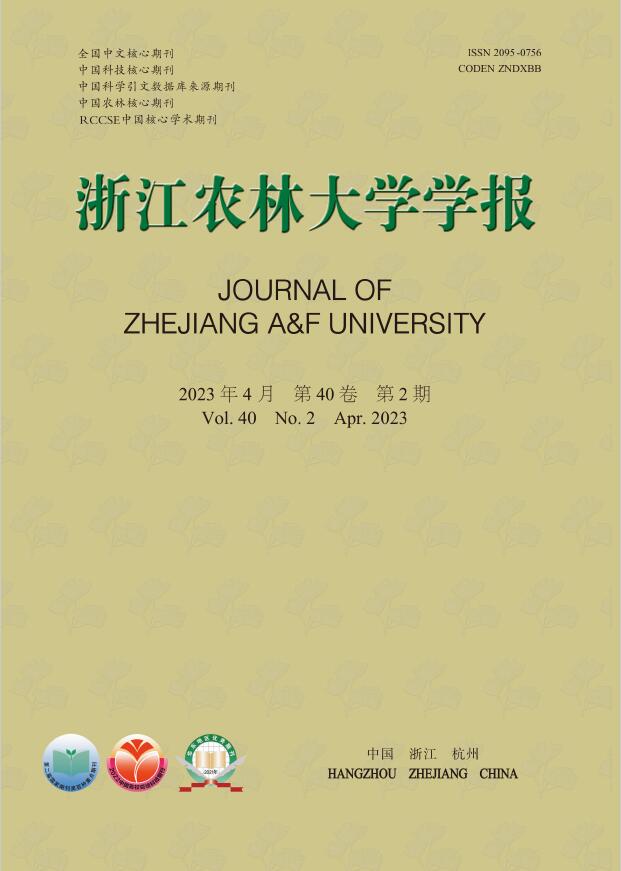-
大青叶为十字花科Brassicaceae菘蓝属Isatis 2年生草本植物菘蓝Isatis indigotica的干燥叶,具有清热解毒、凉血消斑的功效[1],主要含有生物碱类、黄酮类、多糖、有机酸、氨基酸等活性成分[2]。其中,靛玉红是《中华人民共和国药典》2020版(一部)中大青叶的指标成分。研究表明:大青叶中的靛蓝、靛玉红具有抗病毒、抗肿瘤等多种药理活性[3];黄酮类化合物具有抗菌、抗氧化作用[4];多糖类化合物具有一定的免疫调节作用[5];氨基酸类化合物具有体外抗内毒素作用[6]。
近年来关于菘蓝的研究集中在水分、氮素、盐胁迫等对其生长、生理的影响,鲜见光强对大青叶生长、化学成分及抗氧化活性影响的研究报道。光是影响植物生长的重要环境因素之一,能调控植物的生长、发育和形态建成[7];此外光强与植物茎、叶的生长及形态结构有密切关系,直接决定植物的生长和产量,影响植物体内次生代谢物的生物合成和积累。植物可通过调节自身形态和生理特性从而调节光合性能以适应不同环境。根据“光照-寒热药性”假说[8],大青叶性寒,推测强光照条件更适合其基原植物菘蓝的栽培。鉴于此,本研究通过设置不同光强梯度,研究了光强对菘蓝生长、药材大青叶化学成分与抗氧化活性的影响,进一步验证“光照-寒热药性”假说,以期为菘蓝栽培提供依据。
-
试验种子于2020年采自河北省保定市,经南京农业大学中药材研究所郭巧生教授鉴定为十字花科菘蓝属植物菘蓝的种子。
-
数字式照度计(VICTOR 1010D型,西安北城电子有限责任公司);分析天平(FA1104型,上海精科天平);高效液相色谱仪(Agilen 1290型,美国安捷伦公司);紫外-可见分光光度计(Alpha-1506型,上海谱元仪器有限公司);台式高速冷冻离心机(5810R型,Eppendorf公司);PS-60A型超声波清洗机;水浴锅(HH-S型,巩义市苏华仪器有限责任公司);旋转蒸发仪(RE-2000A型,上海亚荣生化仪器厂);循环水真空泵(SHZ-D型,巩义市予华仪器有限责任公司);有机滤头(0.22 μm,江苏康健医疗用品有限公司)。
-
靛蓝(CAS:482-89-3)、靛玉红(CAS:479-41-4)、芦丁(CAS:153-18-4)、L-精氨酸(CAS:74-79-3)等对照品购自上海源叶科技有限公司;D(+)-无水葡萄糖(CAS:50-99-7)对照品购自国药集团化学试剂有限公司。
-
本研究于2021年3—10月进行。2021年3月31日播种,基质为V(营养土)∶V(珍珠岩)∶V(蛭石)=5∶3∶2[9];苗高为3~5 cm时选取健康、长势均一的植株移于花盆(直径25 cm,高18 cm)中并遮光处理。选择晴朗正午,使用不同针数遮阳网搭建遮光棚,遮光棚之间留有一定间距,避免交叉遮光。根据数字式照度计将遮光度分别调整为100%全光照(无遮光)、60%全光照、20%全光照共3个处理,分别代表强、中、弱3个水平的光强,每个处理种植32盆,每盆2株,种植管理模式相同。随机排列,每周随机调换位置以减小试验误差。同年10月下旬,采收健康、完整、无病虫害的叶片。105 ℃杀青15 min,60 ℃烘干后,粉碎过60目筛,保存于药品阴凉柜(4 ℃)中备用。
-
菘蓝生长旺盛期,每组随机选取10盆,测量菘蓝株高并记录叶片数,同时选取自地上部分开始第3片完全展开的成熟叶,测量叶长、叶宽、叶柄长、叶面积等植株形态性状[10]。
-
Agilent EclipsePlus C18色谱柱(70 mm×2.1 mm,1.8 μm);流动相为水-甲醇,体积比为25%∶75%;柱温为30 ℃;检测波长为289 nm;流速为0.2 mL·min−1;进样量2 μL;洗脱方法为0 min 25%水,5 min 25%甲醇,检测时间共5 min,大青叶检测方法参考文献[1]。
-
称取干燥至恒量的靛蓝和靛玉红对照品各2 mg,分别加N,N-二甲基甲酰胺 (DMF),制得标准品溶液质量浓度靛蓝为1.562 5~100.000 0 mg·L−1,靛玉红为0.156 25~10.000 00 mg·L−1,注入高效液相色谱仪,以峰面积积分值为纵坐标,对照品的质量浓度为横坐标,计算靛蓝和靛玉红标准曲线。
-
称取大青叶粉末0.100 0 g,加入DMF 10 mL,超声提取30 min,放冷,抽滤,取滤液,再加入DMF定容至25 mL,用0.22 μm有机滤头过滤,取续滤液,得供试品溶液。精密吸取各供试品溶液2 μL,注入高效液相色谱仪测定峰面积积分值,根据标准曲线分别计算样品中靛蓝、靛玉红质量分数。
-
同一供试品溶液重复进样6次,计算相对标准偏差(RSD,%),以测验精密性。同一组样品粉末重复称取6次并制备供试品溶液,分别进样并计算RSD,以测验重复性。同一供试品溶液分别于0、2、4、6、12、24 h后进样,计算RSD,以测验24 h稳定性。
-
称取同一组大青叶样品6份,设置低、中、高3个梯度,分别加入一定量的靛蓝和靛玉红标准对照品,按2.3.3中操作方法制备供试品溶液,并测定靛蓝和靛玉红质量分数,分别计算回收率及RSD。
-
以芦丁为对照品测定总黄酮质量分数,采用亚硝酸钠-硝酸铝比色法[11],测定510 nm波长处吸光度,通过芦丁的标准曲线计算样品中总黄酮质量分数,重复5次。
-
以D(+)-无水葡萄糖为对照品测定总多糖质量分数,采用苯酚-硫酸法[12],测定490 nm波长处吸光度,通过葡萄糖标准曲线计算样品中总多糖质量分数[13],重复5次。
-
以L-精氨酸为对照品测定总游离氨基酸质量分数,采用茚三酮比色法[14],测定570 nm波长处吸光度,通过精氨酸标准曲线计算样品中总游离氨基酸质量分数,重复5次。
-
1,1-二苯基-2-三硝基苯肼(DPPH)自由基清除法常被用作评价植物提取物的抗氧化活性[15],具有简单便捷、快速灵敏的优点[16]。称取各组大青叶粉末0.200 0 g,重复3次,加入体积分数为50%的乙醇20 mL,在64 ℃下超声提取85 min,抽滤,得到大青叶提取液。用体积分数为50%的乙醇将大青叶提取液配置成0.8~8.0 g·L−1 10个等梯度的样品溶液。分别取0.1 mL样品溶液加入3.9 mL的DPPH溶液,室温下避光反应30 min,测定517 nm波长处吸光度D(517)样品;以50%乙醇代替DPPH溶液,测得的吸光度为D(517)对照;以50%乙醇代替样品溶液,测得的吸光度为D(517)空白,并分别计算清除率。以清除率为纵坐标,样品浓度为横坐标,计算标准曲线,根据标准曲线计算DPPH自由基半清除率(IC50)及RSD。
其中:D(517)空白表示反应前DPPH的吸光度;D(517)样品表示反应后DPPH的吸光度;D(517)对照表示大青叶提取液的吸光度。
-
数据采用Excel和SPSS 26.0进行统计与分析,结果均以平均值±标准误表示。不同处理相同指标进行Duncan多重比较,显著性水平为0.05。
-
从表1可见:100%全光照组的菘蓝株高、叶长、叶宽、叶片数,均显著高于20%全光照组(P<0.05),但与60%全光照组无显著差异;其中60%全光照组的叶长、叶片数显著高于20%全光照组(P<0.05),但株高、叶宽无显著差异。随着光强降低,菘蓝叶面积逐渐减少,100%全光照组的叶面积最大,与60%全光照组和20%全光照组存在显著差异(P<0.05)。随着光强降低,菘蓝叶柄长逐渐升高,20%全光照组叶柄长最大,与100%全光照组和60%全光照组存在显著差异(P<0.05)。
处理 株高/cm 叶长/cm 叶宽/cm 叶柄长/cm 叶片数/片 单片叶面积/cm2 100%全光照 27.30±2.82 a 25.57±1.59 a 5.97±0.74 a 4.68±0.71 c 13.20±1.23 a 75.55±10.60 a 60%全光照 26.60±2.28 ab 25.47±2.33 a 5.30±0.64 ab 5.85±1.02 b 12.50±1.27 a 56.06±12.66 b 20%全光照 24.95±1.69 b 23.27±1.61 b 4.93±0.91 b 9.01±1.27 a 10.50±1.72 b 46.93±10.51 b 说明:不同字母表示同一指标不同处理间差异显著(P<0.05) Table 1. Morphology of I. indigotica under different light intensities
-
靛蓝和靛玉红的标准曲线方程见表2。不同光强处理下大青叶靛蓝和靛玉红质量分数见表3。靛蓝质量分数随着光强减弱而降低,100%全光照组靛蓝质量分数最高,与60%全光照组和20%全光照组差异显著(P<0.05)。但随着光强减弱,靛玉红质量分数先升高再降低,60%全光照组的靛玉红质量分数最高,与100%全光照组和20%全光照组差异显著(P<0.05),但100%全光照组与20%全光照组的靛玉红质量分数无显著差异。
活性成分 回归方程 决定系
数R2质量浓度/
(mg·L−1)靛蓝 y=53 115x−11 584.0 0.999 9 3.125 00~50.000 00 靛玉红 y=45 271x+869.3 0.999 9 0.156 25~10.000 00 说明:x为对照品的质量浓度,y为峰面积积分值 Table 2. Standard curves for indigo and indirubin
处理 靛蓝/(mg·g−1) 靛玉红/(mg·g−1) 100%全光照 8.095±0.126 a 0.307±0.004 b 60%全光照 7.042±0.276 b 0.377±0.015 a 20%全光照 5.310±0.229 c 0.314±0.002 b 说明:不同字母表示同一指标不同处理间差异显著(P<0.05) Table 3. Contents of indigo and indirubin of isatidis folium under different light intensities
从表4可见:靛蓝在低、中、高浓度下加样回收率分别为96.604%、95.999%、95.526%,RSD为0.562%;靛玉红在低、中、高浓度下加样回收率分别为95.279%、95.793%、97.544%,RSD为1.195%。说明该方法满足检测要求。
化合物
名称称样
量/g样品
量/μg对照品加
入量/μg测得
量/μg平均回
收率/%RSD/% 靛蓝 0.100 14.203 5.436 19.454 96.604 0.562 10.873 24.641 95.999 16.309 29.782 95.526 靛玉红 0.100 0.563 0.274 0.824 95.279 1.195 0.548 1.094 95.793 0.822 1.365 97.544 Table 4. Recoveries at low, medium and high concentration levels
-
从表5可见:不同光强处理的大青叶总黄酮、总多糖质量分数随着光强减弱而降低,100%全光照组的大青叶总黄酮、总多糖质量分数均最高,与60%全光照组和20%全光照组差异显著(P<0.05)。总游离氨基酸质量分数随着光强减弱而升高,20%全光照组的总游离氨基酸质量分数最高,与60%全光照组和100%全光照组差异显著(P<0.05)。
处理 总黄酮/
(mg·g−1)总多糖/
(mg·g−1)总游离氨基
酸/(mg·g−1)100%全光照 54.01±2.88 a 13.41±0.05 a 38.81±0.71 c 60%全光照 43.87±0.27 b 7.74±0.13 b 45.59±0.47 b 20%全光照 31.09±0.93 c 5.41±0.06 c 57.53±0.68 a 说明:不同字母表示同一指标不同处理间差异显著(P<0.05) Table 5. Contents of total flavonoids, total polysaccharides and total free amino acid of isatidis folium under different light intensities
-
从表6可知:100%全光照组大青叶提取液对DPPH自由基的清除能力最强,DPPH IC50最低,60%全光照组的清除能力次之,20%全光照组的清除能力最弱。20%全光照组的DPPH IC50显著高于60%全光照组和100%全光照组(P<0.05),但60%全光照组与100%全光照组DPPH IC50无显著差异。
处理 DPPH IC50/(g·L−1) 100%全光照 4.51±0.27 b 60%全光照 4.80±0.32 b 20%全光照 6.61±0.24 a 说明:不同字母表示不同处理间差异显著(P<0.05) Table 6. Antioxidant activity of isatidis folium extracts under different light intensities
-
从表7可见:大青叶总黄酮、总多糖、靛蓝之间呈正相关,其中靛蓝和总黄酮呈显著正相关(P<0.05),相关系数为0.999;总游离氨基酸与总黄酮、总多糖、靛蓝、靛玉红均呈负相关,其中总游离氨基酸与总黄酮、靛蓝呈显著负相关(P<0.05),相关系数分别为−0.998、−1.000。DPPH IC50与总黄酮、总多糖、靛蓝、靛玉红呈负相关,其中DPPH IC50与总黄酮、总游离氨基酸、靛蓝的相关系数分别达−0.955、−0.968,但均未达到显著水平;DPPH IC50与总游离氨基酸呈正相关,其相关系数达0.972,但未达到显著水平。
项目 总黄酮 总多糖 总游离
氨基酸靛蓝 靛玉红 DPPH IC50 总黄酮 1 总多糖 0.946 1 总游离氨基酸 −0.998* −0.923 1 靛蓝 0.999* 0.930 −1.000* 1 靛玉红 0.003 −0.322 −0.067 0.049 1 DPPH IC50 −0.955 −0.807 0.972 −0.968 −0.299 1 说明:*表示显著相关(P<0.05) Table 7. Correlation analysis of chemical composition and antioxidant activity for isatidis folium
从表8可见:大青叶总多糖与叶宽、叶面积呈显著正相关(P<0.05),相关系数分别为0.998、0.999;总游离氨基酸与株高呈显著负相关(P<0.05),相关系数为−0.997。
项目 株高 叶长 叶宽 叶柄长 叶片数 叶面积 总黄酮 0.991 0.924 0.966 −0.986 0.984 0.959 总多糖 0.893 0.750 0.998* −0.879 0.874 0.999* 总游离氨基酸 −0.997* −0.947 −0.947 0.995 0.995 −0.938 靛蓝 0.996 0.941 0.953 −0.993 −0.993 0.944 靛玉红 0.138 0.384 −0.257 −0.168 −0.168 −0.282 说明:*表示显著相关(P<0.05) Table 8. Correlation analysis of chemical composition and morphology for isatidis folium
-
光强的变化会使植物体改变生物量分配以及形态结构,以适应外界光照环境的变化[17]。张锋等[18]研究发现:菘蓝属于典型的阳生植物,光适应性较强,能在自然光与中度郁闭以上的弱光环境中维持光合产物的净积累。本研究发现:各光强处理的菘蓝均能正常生长,其株高、叶长、叶宽、叶片数和叶面积均与光强呈正相关,即自然光照下的菘蓝长势旺盛,且各项指标随光强减小而降低,这与张锋等[18]的研究相似。而叶柄长与光强呈负相关,推测原因是植株在弱光照条件下,通过主动的“觅食”行为,增加叶柄长度以获取更有利的生存资源[19]。
-
不同药用植物的生物碱类成分对光强的响应存在一定的差异。铁皮石斛Dendrobium officinale生物碱量的最高峰出现在中、低光强的条件下[20];而益母草Leonurus japonicus在阴生条件下,总生物碱量较低,仅为1.13%,在自然光照充足条件下,总生物碱量高达2.30%[21]。靛蓝、靛玉红为大青叶生物碱中的主要成分,其中靛玉红是大青叶药材品质评价指标性成分[1]。研究表明:板蓝Strobilanthes cusia叶中靛蓝、靛玉红的累积具有相似的趋势,且单层遮光与双层遮光对板蓝叶中靛蓝、靛玉红影响较小[22]。覃军等[23]研究指出:仅从靛玉红质量分数看,各光照条件均适宜马蓝Baphicacanthus cusia的种植,在综合考虑生长和产量等影响因素后,全阴及半阴条件更适宜马蓝的种植。而本研究发现:大青叶靛蓝质量分数随光强减弱而降低,即强光有利于靛蓝积累;而中度光强有利于靛玉红的积累,强光与弱光处理下靛玉红质量分数均降低。两者对光强变化响应较大,存在一定差异,且目前相关研究较少,因此大青叶生物碱类成分对光强变化的响应机制还需进一步探究。
光强对于不同植物黄酮类成分的影响不同,但大多数植物的黄酮类成分质量分数随着光强的增强而增加[24]。严晓芦等[25]研究表明:紫花地丁Viola philippica总黄酮质量分数与光强呈正相关。谢小翌等[26]研究发现:减弱光强会明显降低蒲公英Taraxacum mongolicum总黄酮质量分数。本研究发现:大青叶总黄酮质量分数与光强间的关系基本符合上述规律,即增大光强可促进黄酮类成分的累积。
总多糖和总游离氨基酸属于植物的初生代谢产物,其中氨基酸是植物次生代谢过程的重要前体物质。邵尉等[27]研究发现:全光照有利于铁皮石斛叶中多糖的积累,而茎中多糖的积累则不需要太多光照。在本研究中,总多糖质量分数在100%全光照条件下最高。李影影等[28]研究表明:遮光前后南方红豆杉Taxus wallichiana var. chinensis的游离氨基酸质量分数差异不明显。吴晓红[29]研究表明:无光或弱光胁迫下,迷迭香Rosmarinus officinalis中氨基酸质量分数显著提高。本研究发现:大青叶中总游离氨基酸质量分数随光强减弱而升高,推测在弱光条件下植物通过光合作用形成腺苷三磷酸(ATP)较少,碳水化合物积累量也较少,为了维持正常的碳氮循环,蛋白质水解产生氮以游离氨基酸的形式储存,导致总游离氨基酸质量分数增加[30−32]。
-
光强对植物抗氧化活性的影响不一致。朱志国等[33]研究发现:适度遮光后随着光强的降低,马蹄金Dichondra micrantha抗氧化活性增强;张跃进等[34]研究发现:遮光条件下半夏Pinellia ternata超氧化物歧化酶(SOD)、过氧化物酶(POD)活性以及丙二醛(MDA)质量分数较全光照下降低;刘新等[35]发现:过高或过低的光强均使忍冬Lonicera japonica植株产生大量的活性氧,导致抗氧化酶的活性增强;王萌等[36]发现:在一定范围内,随着光强的提高,菊花Chrysanthemum × morifolium的抗氧化能力逐渐增强。本研究发现大青叶提取液对DPPH自由基的清除能力与光强呈正相关,100%全光照组的清除能力最强。
黄酮类化学成分具有较高的抗氧化活性,如刘富康等[37]研究表明:在一定范围内大青叶中粗黄酮质量分数与抗氧化活性成正比。而靛蓝、靛玉红互为同分异构体,属于吲哚类生物碱,具有较高的抗氧化能力,靛蓝和靛玉红在较低质量分数下也对DPPH具有较强的清除作用[38]。研究表明:植物多糖也具有一定的抗氧化活性[39]。本研究发现:大青叶提取液对DPPH自由基的清除能力与光强呈正相关,同时与总黄酮、总多糖、靛蓝、靛玉红呈正相关,与总游离氨基酸呈负相关。
综上所述,当光强为100%全光照时,大青叶药材产量、多种化学成分和抗氧化活性均为最高,适应生产需求。大青叶性味苦、寒,具有清热解毒,凉血消斑的作用。本研究结果表明:菘蓝适合生长在强光照条件下,符合“光照-寒热药性”假说。后续仍需进行药理研究加以验证光强对大青叶药材品质的影响。
Effects of light intensity on growth, chemical composition and antioxidant activity of Isatis indigotica
doi: 10.11833/j.issn.2095-0756.20220263
- Received Date: 2022-04-02
- Accepted Date: 2022-10-23
- Rev Recd Date: 2022-09-27
- Available Online: 2023-04-03
- Publish Date: 2023-04-20
-
Key words:
- Isatis indigotica /
- isatidis folium /
- light intensity /
- indigo /
- indirubin /
- total flavonoids /
- total polysaccharides /
- total free amino acid
Abstract:
| Citation: | LI Xinyao, HUANG Jiabin, GUO Qiaosheng, et al. Effects of light intensity on growth, chemical composition and antioxidant activity of Isatis indigotica[J]. Journal of Zhejiang A&F University, 2023, 40(2): 356-364. DOI: 10.11833/j.issn.2095-0756.20220263 |









 DownLoad:
DownLoad: